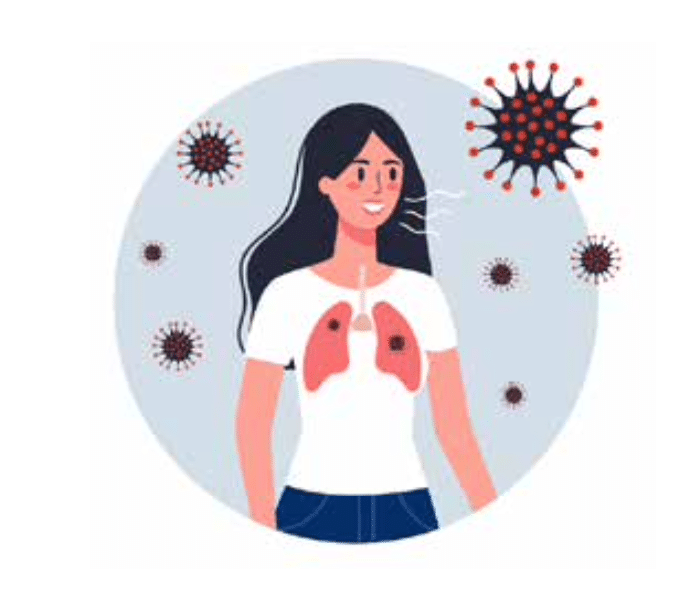
Although the pandemic is officially over, there are still several post-pandemic factors affecting the health of Americans. Long COVID is the name researchers have given the most prevalent of these factors. According to the Centers for Disease Control (CDC) Long COVID can include a wide range of ongoing health problems; these conditions can last weeks, months, or even years.
At least 65 million individuals worldwide are estimated to have Long COVID, with cases increasing daily.
What is Long COVID?
Simply put, it’s a variety of symptoms in any combination or individually, that linger after being exposed to the COVID virus
Clients with Long COVID report prolonged, multisystem involvement and significant disability. By seven months, many patients have not yet recovered and have not returned to previous levels of work. They continue to experience significant symptom burden.
The strange thing is that you can get Long COVID even though you were not sick with the virus. ln some cases, a person with Long COVID may not have tested positive for the virus, or even known they were exposed.
Some Long COVID sufferers only contact with the virus is from the vaccination. The National Institutes of Health (NIH) reports that getting vaccinated only lowers your chance of getting Long COVID by 15 percent.
The coronavirus has one very important component – a spike protein. It’s the key player responsible for how the virus enters your body’s cells.
The spike protein is like a tiny, spiky club on the surface of the virus. It attaches to receptors on your cells, like a lock and key. Once it’s in, it tricks your cells into letting the virus inside, where it starts multiplying and causing all sorts of trouble.
Researchers believe that spike protein may be a major contributing factor in Long COVID.
How does this work?
When your immune system fights off the virus, it can leave behind fragments of the spike protein. These lingering bits can confuse your immune system, causing it to go haywire.
Your immune system might attack not only the spike protein but also your own healthy cells. This “friendly fire” can lead to inflammation, fatigue, and a host of other symptoms that define Long COVID.
It’s like your body’s soldiers going rogue, causing chaos long after the battle is over.
In a nutshell, the spike protein is the sneaky entry ticket for the coronavirus, and its remnants might be the culprits behind Long COVID’s mysterious and long-lasting symptoms.
Long COVID Symptoms
The most troubling part of Long COVID is that there is a wide variety of possible symptoms. This makes it hard to diagnose. According to the CDC, Long COVID includes more than 200 symptoms that can impact multiple organ systems.
General symptoms
Tiredness or fatigue that interferes with daily life
Symptoms that get worse after physical or mental effort
Fever
Respiratory and heart symptoms
Difficulty breathing or shortness of breath
Cough
Chest pain
Fast-beating or pounding heart (also known as heart palpitations)
Neurological symptoms
Difficulty thinking or concentrating (sometimes referred to as “brain fog”)
Headaches
Sleep problems
Dizziness when you stand up (lightheadedness)
Pins-and-needles feelings
Change in smell or taste
Depression or anxiety
Digestive symptoms
Diarrhea
Stomach problems
Other symptoms
Joint or muscle pain
Rash
Changes in menstrual cycles
How Do You Know if You’re Affected by Long COVID?
Because the symptoms are like many other illnesses, Long COVID can be a puzzling and often debilitating condition. It can affect you long after you are exposed to the virus and have spike proteins introduced to your system.
Here are some clues that you might have Long COVID:
1. Persistence of Symptoms: One of the primary indicators of Long COVID is the persistence of symptoms for weeks or even months after the initial exposure to the COVID-19 virus. Common symptoms include fatigue, shortness of breath, chest pain, joint pain, and cognitive issues. These symptoms can significantly impact one’s daily life and should not be dismissed as mere post-viral fatigue.
2. Variety of Symptoms: Long COVID is often characterized by a wide range of symptoms that can affect different systems in the body. These may include respiratory, cardiovascular, neurological, gastrointestinal, and psychological symptoms. The combination of symptoms can vary from person to person.
3. Diagnosis by Exclusion: sometimes figuring this out takes a while and requires a process of elimination. If tests show no other underlying medical condition, and you’ve had exposure to the virus in some form, Long COVID becomes a more likely answer.
4. Impact on Quality of Life: Long COVID can have a profound impact on your quality of life, affecting your ability to work, exercise, socialize, and perform everyday tasks. If you notice that your life has been significantly disrupted by persistent symptoms, it’s crucial to seek effective help.
If you suspect you have Long COVID, it’s essential to consult a knowledgeable healthcare provider who is familiar with this condition and how to handle it.
They can help manage your symptoms, offer guidance on effective remedies, and provide support.
Research on Long COVID is ongoing, and healthcare professionals are continually learning more about its underlying mechanisms and potential solutions. Staying informed and seeking effective help is crucial if you think you have this condition.
Phone
Address
10006 Carrington Pl, Manassas, VA 20109
Hours
Monday 9am to 1pm
Wednesday 9am to 2pm and 4pm to 7pm
Friday 9am to 2pm and 4pm to 7pm
Saturday 9am to 1pm
Disclaimer – Privacy Policy – Terms and Conditions|©Copyright 2023. All Rights Reserved.
